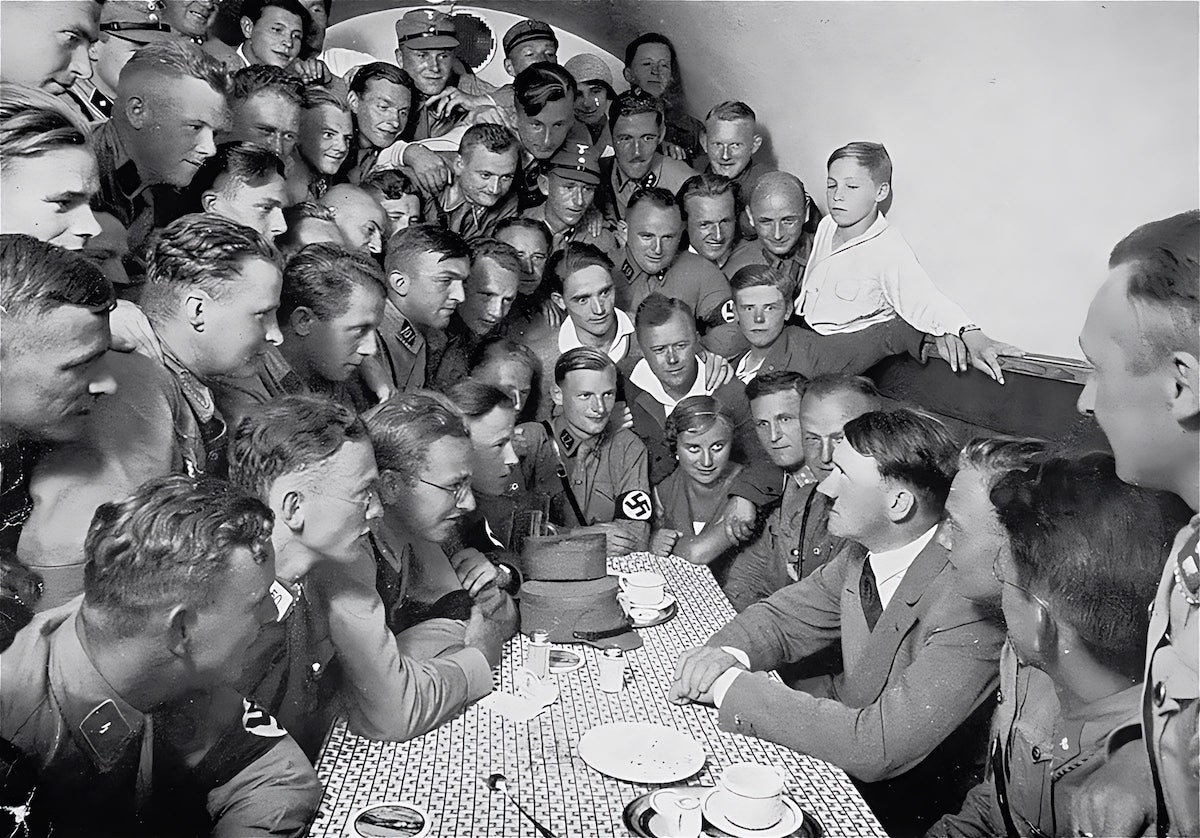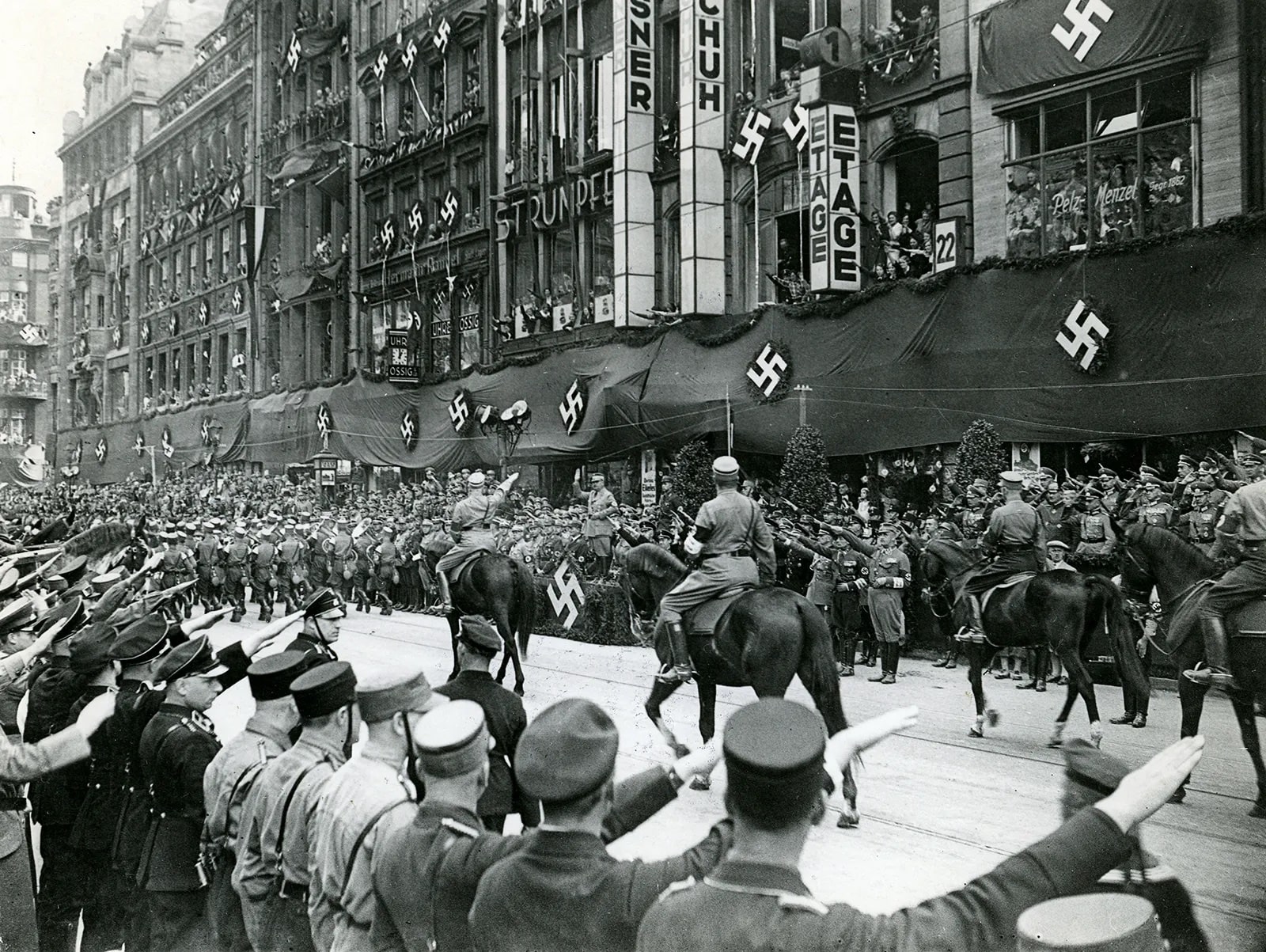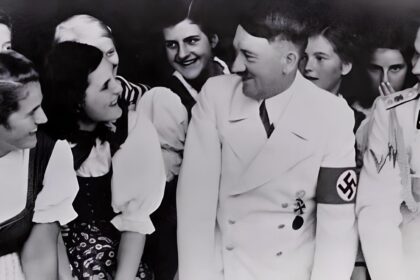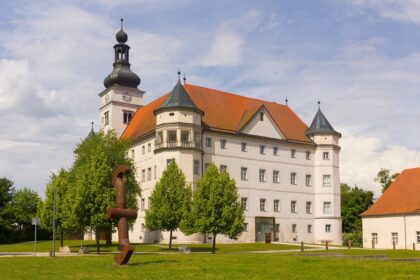The Schutzstaffel, often known as the SS (which means “Protection Squadron”), was formed in the mid-1920s with a small number of people. Growth in membership and scope of operations followed Adolf Hitler‘s ascension to power. The SS evolved from Hitler’s personal bodyguards into a “state within a state” with a wide range of political, repressive, and ideological responsibilities. The SS was responsible for some of the greatest crimes perpetrated during the World War II in the 20th century, and was therefore declared a criminal organization after the war’s conclusion.
- Why did Hitler create the Schutzstaffel?
- How was the Schutzstaffel organized?
- Heinrich Himmler: The man at the head of the Schutzstaffel
- Waffen-SS: The military component of the Schutzstaffel
- How did the SS participate in World War II?
- How was the Schutzstaffel represented?
- Effects of German defeat on the SS
- TIMELINE OF THE SCHUTZSTAFFEL
Why did Hitler create the Schutzstaffel?

When Adolf Hitler joined the National Socialist Party of German Workers (NSDAP) in 1921, he quickly rose to the position of president. Later the same year, he plotted a coup called the Beer Hall putsch in an effort to seize control. Due to legitimate security concerns, Hitler decided to hire personal bodyguards.
In 1923, he formed the Stabswache, which was soon succeeded by Adolf Hitler’s Stosstrupp and then, in 1925, by the Schutzstaffel. The SS would endure and develop even though the coup had failed and Hitler had been imprisoned for five years (though he would spend only nine months of them behind bars).
How was the Schutzstaffel organized?
Formerly a unit of the Sturmabteilung (SA), the main paramilitary force of the NSDAP, the Schutzstaffel was formed independently in 1933. In 1934, after the “Night of the Long Knives” coup, the SS was able to strike off on its own. It was granted organizational autonomy under the Führer’s direction. Contrary to popular belief, the Schutzstaffel was not part of the German Army (Wehrmacht).
The SS had a complicated hierarchy with many different sub-units and branches. The SS-Führungshauptamt (administrative and operational headquarters) included Himmler’s personal staff, large units like the Waffen-SS and the SS-Totenkopfverbände (death squads) in charge of the camps, the Gestapo (the Third Reich’s police force), and the Einsatzgruppen (mobile extermination units that acted primarily on the Eastern Front).
Heinrich Himmler: The man at the head of the Schutzstaffel
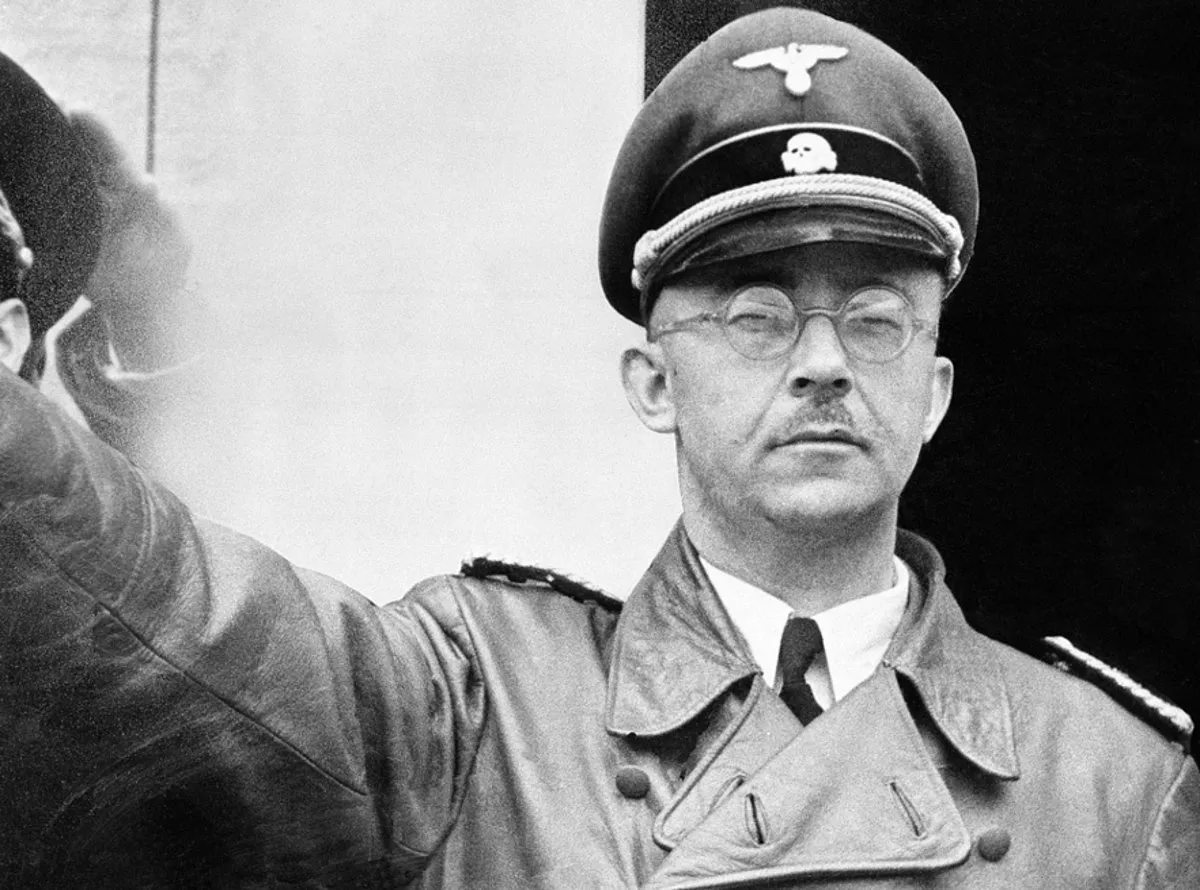
Heinrich Himmler, one of the key figures in Nazi Germany’s strategy of annihilation, was born on October 7, 1900 and was often regarded as the SS’s leader. Heinrich Himmler, who was too young to fight in World War I, became an extreme nationalist and Nazi right-winger very rapidly.
He began his career in the SS in 1926 as the district chief for Upper Bavaria, and after gaining Hitler’s trust, he quickly rose through the ranks, eventually becoming not only the head of the Schutzstaffel, but also the head of the German police and ultimately the Minister of the Interior of the Third Reich. Additionally, Heinrich Himmler and Reinhard Heydrich were responsible for the administration of Nazi concentration and death camps.
Waffen-SS: The military component of the Schutzstaffel
The Waffen-SS was the purely military part of the SS. It was Heinrich Himmler’s idea to form this army, and they portrayed themselves as being made up entirely of die-hard Nazi race-bashers. One such Waffen-SS division was the 33rd SS “Charlemagne” Division, which was mostly composed of French volunteers willing to fight with the Germans.
How did the SS participate in World War II?
The SS committed some of the greatest crimes during World War II. It established and oversaw the concentration and extermination camps where Jews and other enemies of the Nazi dictatorship were held, paving the way for mass murder. It was also responsible for maintaining the reign of Nazi terror, first inside Germany and afterwards in the other war zones where it was active.
It carried out its repressive and ideological duties throughout all of the Third Reich’s occupied areas, including France. A notorious atrocity committed by the Schutzstaffel was the Babi Yar Massacre in the Kiev area. More than 33,000 Jews were killed there by the Einsatzgruppen before the neighboring detention camp was erected.
The massacre in Oradour-sur-Glane, France, was carried out by an SS division that hoped to crush any potential resistance movement in the wake of the Normandy landings. In parallel, the Schutzstaffel, which sought to dominate the Aryan race, established the Lebensborn to “produce” Aryan offspring.
How was the Schutzstaffel represented?
The SS was officially symbolized by the double Sig Rune (or Siegrune), which was a combination of the letters “S” and “S,” standing for “Schutzstaffel.” Its slogan was “Meine Ehre heißt Treue,” which translates to “My Honor Means Loyalty.”
The SS used distinctive Hugo Boss outfits beginning in the 1930s and lasting until the conclusion of WWII. The SS was founded on Adolf Hitler’s ideology of the Aryan race’s supremacy and German unification. The Schutzstaffel’s mission to destroy the Jewish people was motivated by ideological considerations of this kind.
Effects of German defeat on the SS
The SS was disbanded after Germany’s defeat in 1945. The Schutzstaffel was formally labeled a criminal organization when its members were listed as defendants in the renowned Nuremberg Trials (1945-1946).
Outcomes for SS members and associates were very variable. Some were captured and put on trial, while others evaded capture and punishment on a global scale. Some prominent Schutzstaffel members, like Heinrich Himmler, committed suicide rather than face justice for their misdeeds.
TIMELINE OF THE SCHUTZSTAFFEL
On January 30, 1933, Hitler becomes chancellor of Germany
President Paul von Hindenburg named Hitler Reich Chancellor, although he had little sympathy for the head of the National Socialist German Workers’ Party. This is a pivotal moment in Hitler’s rise to power and the beginning of the Nazi era.
It all started with the first concentration camp on March 20, 1933
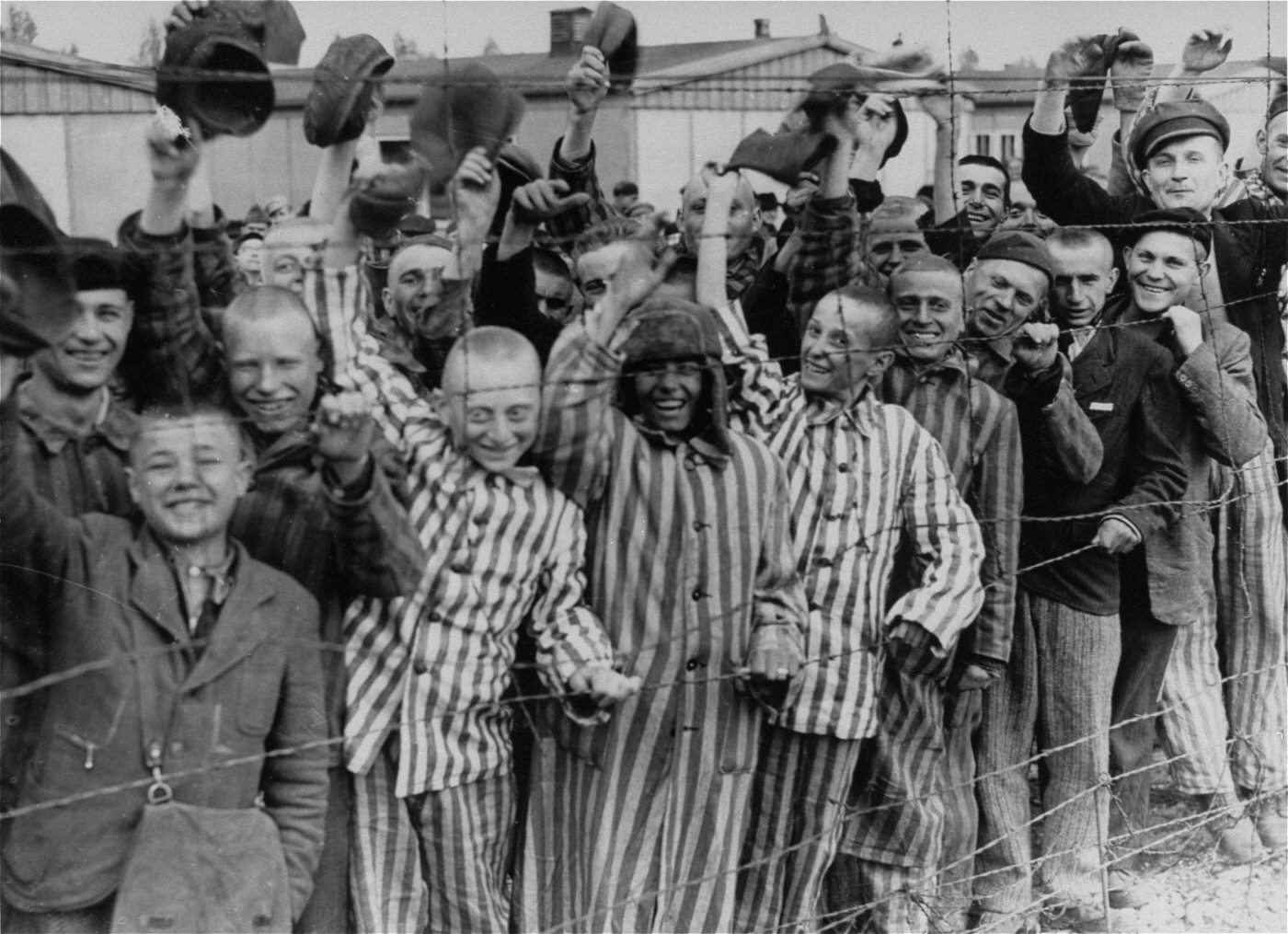
The SS’s Heinrich Himmler created the first concentration camp, known as Dachau. This camp was built specifically to hold communists and social democrats who opposed Hitler’s policies. More than 250,000 individuals were detained at Dachau between 1933 and 1945. As many as 70,000 people killed.
Gestapo was established on April 26, 1933
The Gestapo, or “secret state police,” was established by Hermann Goering to eliminate any and all resistance to the National Socialist rule. The Gestapo took advantage of complete legal protection to commit innumerable extortions and murders. The Gestapo deported several opponents to detention camps.
Himmler is officially named Gestapo chief on April 20, 1934
Himmler, the Second in Command of the Third Reich, was instrumental in establishing the totalitarian Nazi system. On April 20, 1934, he assumed control of the Gestapo as the SS’s leader.
From that point on, Hitler had all the instruments of repression necessary to impose Nazi doctrine on the populace at large. Heinrich Müller aided him in his efforts. As the Nazi regime fell apart, Himmler killed himself rather than be apprehended.
On June 30, 1934, the “Night of the Long Knives”

On the night of June 30, 1934, Hitler had SA leader Ernst Röhm eliminated. The Nazi paramilitary organization SA or Sturmabteilung (assault section) was formed in 1921 and played a crucial role in Hitler’s rise to power. But Hitler, fearing the group’s rising influence, had its leaders murdered and gave the repressive SS (Schutzstaffel) much of the authority (protective echelon).
German troops celebrate Hitler’s 50th birthday with a military parade on April 20, 1939
To celebrate being 50 years old, Adolf Hitler planned a military parade in Berlin, with the sole purpose of showing off the might of the Nazi army to the rest of the world. Army Panzers, Air Might pilots, and Luftwaffe soldiers all took part in this show of force.
Venlo incident: November 9, 1939
The Gestapo and Walter Schellenberg, future chief of the German Secret Service, plotted the Venlo incident of November 9, 1939. Two British spies were duped into thinking he plotted to kill Hitler because of this man. It was then decided to meet at Venlo, Netherlands; however, the Gestapo thwarted these plans by murdering Dutch secret agent Dirk Klop and kidnapped two British spies. Hitler gained two things from this: the British public lost faith in German plotters and Germany found an excuse to interfere in the Netherlands.
On January 20, 1942, the Nazis instituted their “Final Solution”
The Wannsee Conference, attended by 15 senior Nazi and SS members, represented the beginning of the “Final Solution”. This can be summarized in two decisions: the identification of Jews to work in concentration camps and the complete extermination of all other Jews. This marked the beginning of the murder and genocide of the Jewish people.
Warsaw Ghetto Uprising, April 19, 1943
Sixty thousand Jews in the Warsaw ghetto rebelled against Nazi SS executioners. The uprising in the Warsaw Ghetto lasted almost a month. 7,000 Jews lost their lives as a direct consequence. The survivors were immediately sent to death camps.
On September 12th, 1943, an SS commando successfully frees Mussolini
Mussolini was liberated from an SS prison in Abruzzo under Captain Otto Skorzeny. The “Duce” used his freedom to establish a new fascist state in northern Italy. Before Mussolini was captured and killed by Italian partisans, he ordered the first executions to be carried out.
The massacre in the Ardeatine Pits took place on March 24, 1944
Three hundred and thirty-five Italian civilians were shot by the Germans on March 24, 1944. (prisoners from the Regina Coeli prison and Jews arrested in a ghetto). This especially brutal murder was in retaliation for the explosion the day before in Rome that took the lives of 32 SS men.
Events at Laclotte and the disaster in Saint-Pierre-de-Clairac on June 7, 1944
French people were slaughtered when the Gestapo and the SS raided the village of Laclotte in the Lot-et-Garonne on June 7th, 1944. Eleven members of the Resistance were killed and many homes were burned at Saint-Pierre-de-Clairac on the same day by the same SS division.
Tulle, a city that was sacrificed on June 9, 1944
The Corrèze town of Tulle was swept by the 2nd SS Das Reich armored division. Supposedly, they were conducting a document verification operation. The operation was unofficially carried out in response to maquisard assaults. Ninety-nine able-bodied Frenchmen were executed, while another 149 were transferred to the Dachau concentration camp.
On June 10, 1944, the SS carried out a massacre against the local population of Oradour
A section of the SS Das Reich division was sent to Oradour-sur-Glane the day following the Tulle operation. The same method was used: the SS said they were conducting an identification check and segregated the males from the women and children before setting fire to the buildings. This atrocity resulted in the deaths of 642 locals.
Liberation of Auschwitz concentration camp, January 27, 1945
The major Nazi death camp, Auschwitz, fell to the Red Army. Seven thousand five hundred people were relieved to see it, and some of them had even gathered enough courage and weapons to rise against the SS. So, between the years of spring 1942 and winter 1945, 1.5 million inmates were killed at Auschwitz.
Adolf Hitler fires Heinrich Himmler on April 18, 1945
Heinrich Himmler sought to negotiate with the British and the Americans as he saw the impending defeat of Germany. After Adolf Hitler discovered his trusted aide betrayed him on April 28, 1945, he immediately relieved him of his responsibilities. The Führer put Karl Hanke in charge of the SS.
The Dachau Massacre, April 29, 1945
The 7th U.S. Army’s 3rd Battalion, 157th Regiment, 45th Infantry Division, was granted entry to Dachau on April 29, 1945. In addition to the appalling living circumstances of the camp’s inmates, the Americans came upon 39 carts full of bodies on their route there. The American troops killed 50 SS members in a fit of rage.
Three ships, the Cape Arcona, the Thielbek, and the Deutschland, went down on May 3, 1945
On April 14th, 1945, Heinrich Himmler, anticipating the approach of Allied soldiers, issued an order for the ex-deportees to be killed. The strategy was straightforward: load up the Cap Arcona, Thielbek, and Deutschland with prisoners and sink them as they hit open water. The British Air Force attacked these vessels on May 3, 1945. Eight thousand individuals perished, most likely from drowning or being shot by the SS.
The verdict of the Nuremberg Trial, announced on September 30, 1946

A ruling was made by the International Military Tribunal at Nuremberg. The courts convicted culpability in 22 top Nazis for their roles in the atrocities committed during the war. As “crimes against humanity,” twelve of them were given the death penalty. One of them was Hermann Goering, the former head of the Luftwaffe. Goering took his own life by ingesting a pill containing cyanide the day before he was to be executed.
Bibliograpy:
- Arendt, Hannah (2006). Eichmann in Jerusalem: A Report on the Banality of Evil. New York: Penguin. ISBN 978-0-14-303988-4.
- Art, David (2006). The Politics of the Nazi Past in Germany and Austria. Cambridge; New York: Cambridge University Press. ISBN 978-0-521-85683-6.
- Ayçoberry, Pierre (1999). The Social History of the Third Reich, 1933–1945. New York: The New Press. ISBN 978-1-56584-635-7.
- Baranowski, Shelley (2010). Nazi Empire: German Colonialism and Imperialism from Bismarck to Hitler. Cambridge; New York: Cambridge University Press. ISBN 978-0-521-67408-9.
- Baxter, Ian (2014). Nazi Concentration Camp Commandants 1933–1945: Rare Photographs from Wartime Archives. Images of War. Barnsley: Pen and Sword. ISBN 978-1-78159-388-2.
- Beevor, Antony (2002). The Fall of Berlin
- Jacobsen, Hans-Adolf (1999). “The Structure of Nazi Foreign Policy, 1933–1945”. In Christian Leitz (ed.). The Third Reich: The Essential Readings. Oxford: Blackwell. ISBN 978-0-631-20700-9.
- Joachimsthaler, Anton (1999). The Last Days of Hitler: The Legends, The Evidence, The Truth. London: Brockhampton Press. ISBN 978-1-86019-902-8.
- Kershaw, Ian (2001). Hitler: 1936–1945, Nemesis. New York: W. W. Norton & Company. ISBN 978-0-393-32252-1.
- Kershaw, Ian (2008). Hitler: A Biography. W. W. Norton & Company. ISBN 978-0-393-06757-6.
- Parker, Danny S. (2012). Fatal Crossroads: The Untold Story of the Malmédy Massacre at the Battle of the Bulge. Cambridge, MA: Da Capo. ISBN 978-0-306-81193-7.



